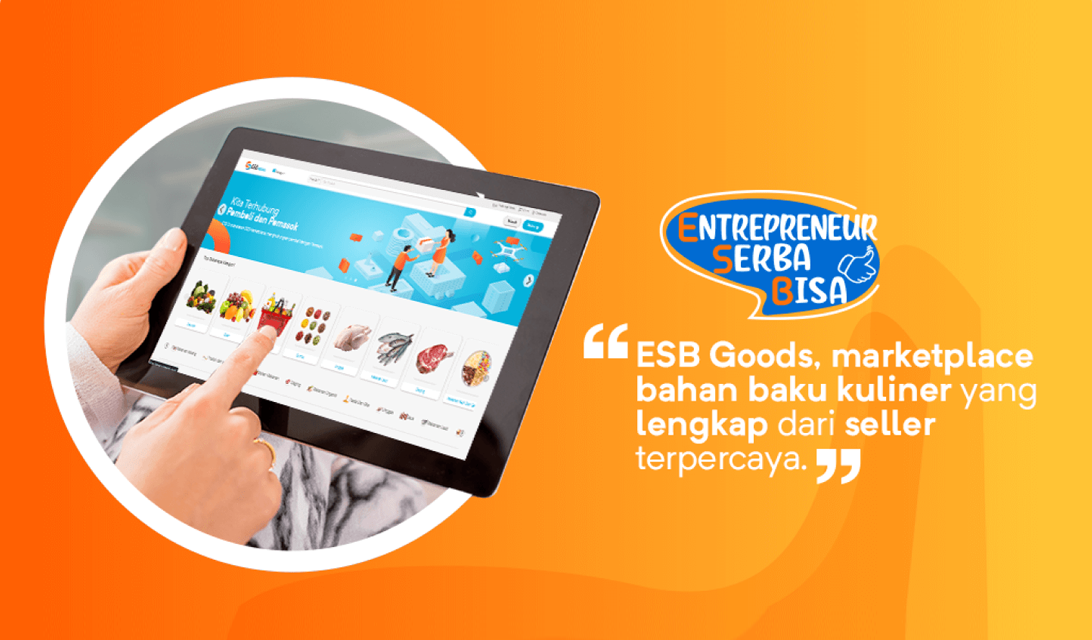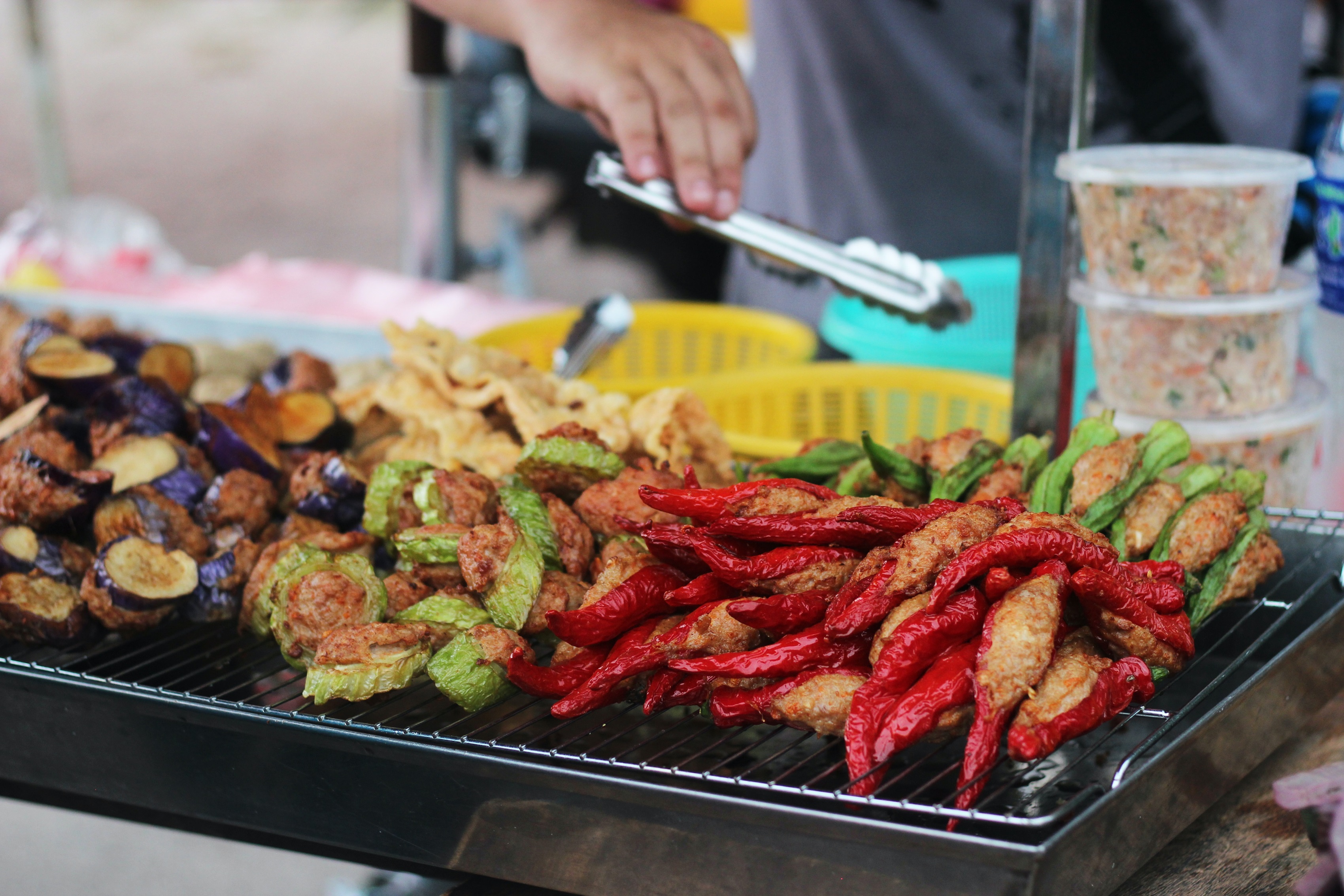 SHARE
SHARE
Want Your Culinary Business to Level Up? Check out These 20 Examples of Food Product Marketing Strategies
Briantama Afiq Ashari
Do you realize that running a culinary business is not just about delicious taste? Nowadays, competition is getting tougher, and without the right marketing strategy, it can be difficult for food businesses to develop.
Well, many business owners often feel confused about how to attract new customers and retain old customers.
Therefore, it is important to understand various examples of food product marketing strategies.
The aim of a food product marketing strategy is to increase the opportunity for your business to become better known and turnover continues to increase.
However, what is the strategy? Come on, let's discuss it in the following article, watch it until the end, okay?
1. Get to know the target market in more depth
The first strategy is to conduct research to determine the target market. So, before starting promotions, you have to know who your target market is. Are there young people who like to hang out?
Or office workers who need cheap and practical food? Well, this is useful when preparing an example of a food product marketing strategy proposal. Because an effective strategy must be based on customer behavior and needs.
Read Also: Advertising Is Advertising: Get to Know the Goals, Types, and Effective Ways to Attract Customers!
2. Make the Most of Social Media
Source: Freepik
Second, you know for yourself that safe now, social media is the main weapon in food marketing. Instagram, TikTok, and Facebook can become digital showcases for your culinary business.
Posting appetizing food photos, making behind-the-scenes videos, and collaborating with food influencers are some effective ways to increase brand awareness.
There are many examples of successful businesses using just this strategy, you know! So, you can apply it in the example of a food product marketing strategy report that will be made later.
3. Give an attractive promotion at the start of the launch
Next, who doesn't like promotions? Especially if you are trying a new product. Providing discounts, buy one get one, or free shipping promotions can attract the attention of potential customers.
This strategy is very effective in increasing the number of transactions and introducing the product to many people.
If you want to get the most out of it, you can include this strategy in the example of the 4P marketing strategy for food products.
4. Create unique and Instagrammable packaging
Believe it or not, apart from the delicious taste, many people buy food because of its attractive packaging. Unique packaging can make customers more interested in trying.
Of course, this can be a powerful organic marketing strategy! Don't forget, attractive packaging can also be included in the marketing strategy for food products as part of branding.
5. Collaborate with Food Delivery
Currently, delivery services such as GoFood, GrabFood, and ShopeeFood have become part of people's lifestyle. Make sure your business is registered on this platform to make it easier for customers to access.
Apart from that, you can provide exclusive promotions on the application to attract more orders. Using this application is proven to help your business scale up.
6. Build a Strong Brand Story
People not only buy food, but also the story behind it. Tell us how your business started, the challenges you faced, and the value you want to bring to customers.
For example, if your business focuses on premium ingredients, tell us how you choose the best ingredients to maintain quality. A strong brand story can create an emotional attachment with customers.
7. Create a Special or Seasonal Menu
Special or seasonal menus can be a special attraction for customers. For example, you can create a special menu for Ramadan, Christmas or certain celebrations.
This strategy can make customers curious to try. Special menus can also increase engagement on social media, especially if they are packaged with an interesting storytelling concept.
8. Take advantage of User-Generated Content
Source: Freepik
Satisfied customers often share their posts on social media. You can take advantage of this by encouraging them to upload photos of your food with certain hashtags.
You can also hold a giveaway or challenge with prizes. This strategy can increase interaction with customers, as well as help with organic marketing.
9. Use Paid Ads that are Right on Target
The next example of a food product marketing strategy is using paid advertising or ads. If you want to reach more customers, don't hesitate to use paid advertising on social media.
Facebook Ads and Instagram Ads allow you to target audiences based on location, age, interests and habits.
10. Create a Website and Offer Online Ordering
Source: Freepik
A website can be a digital showcase for your business. Make sure there is also an online ordering feature so that it is easier for customers to buy your products. So, you can optimize the use of this website from now on, OK?
11. Maximize Social Media with Interactive Content
In the digital era, social media can be used as a platform to interact directly with customers. Interactive content such as polls, giveaways, or quizzes can increase engagement.
For example, create a simple challenge like "Share the sensation of eating at your restaurant and tag your business account for a chance to win special prizes!" Well, this is a surefire way to make your business better known, without having to spend a lot of money.
12. Collaboration with Culinary Influencers
Source: Freepik
Culinary influencers have a big influence in determining food trends. Collaboration with them can be an effective strategy to increase awareness of your product.
Look for food vloggers or celebrities who suit your target market, then invite them to try and review your mainstay menu. If the reviews are positive, their followers will be curious and interested in trying it out for themselves.
13. Apply the 4P Marketing Strategy for Food Products
Oh yeah, next, in the culinary business world, the 4P Product, Price, Place, Promotion marketing strategy is still very relevant. Make sure your food product is unique and has a selling point that differentiates it from competitors.
Determine the price according to the quality and target market. Choose a strategic location, both offline and online. So, finally, don't forget about interesting promotions, from discounts to giveaways.
14. Use Compelling Copywriting
Copywriting is the spearhead in product marketing, you know! An optimal marketing strategy can be done by utilizing copywriting. Create copywriting that is interesting, friendly, and relatable to customers!
15. Leverage Customer Data to Personalize Promotions
Next, is the use of dor customers, why? Because this is a valuable asset. Use this information to send more personalized promotions, such as birthday discounts or menu recommendations based on purchase history.
16. Create a Unique Sensation at the Dining Place
If your business has an offline eating place, create an unforgettable sensation for customers. For example, the "dine-in experience" concept with live cooking, thematic decorations, or an attractive selfie area.
17. Optimize Website and Google My Business
Apart from social media, websites and Google My Business are also important for increasing the visibility of your culinary business. Make sure information such as address, operating hours, menu and contact numbers are always updated. Also add high-quality photos so potential customers can see firsthand the deliciousness of your food.
18. Create a Referral Program for Loyal Customers
Loyal customers can be the best ambassadors for your business. Give them an incentive to invite friends or family to try your product. For example, "Invite your friends to eat here and get a 10% discount!" This method can attract new customers, while maintaining relationships with old customers.
19. Take part in culinary events or pop-up markets
Participating in culinary events can be an effective way to reach a wider market. Apart from introducing your product to a new audience, you can also get direct insight from potential customers about the advantages and disadvantages of your product.
20. Increase Customer Loyalty
Lastly, loyalty programs can be key in retaining loyal customers, and this is where ESB Loop’s role. So, through ESB Loop, you can provide attractive rewards and benefits for customers.
For example, collecting points that can be exchanged for special prizes. This system also helps you identify active and dormant customers, so you can adjust your marketing strategy more effectively.
So, those are some examples of food product marketing strategies that you can apply. Oh yes, you can also compile it in a marketing report, you know! So, you can make a food product marketing strategy ppt example.
What does this example of a food product marketing strategy report look like? Come on, let's see an example below!
Source: ardata.co
That's an example of a food product marketing strategy ppt that you can use as a reference. Preparing this ppt is very important, so that you can assess which strategy is suitable for your business.
Conclusion
With ESB Order integration, your restaurant can even increase the number of orders by up to 13.5%. So, if you want your culinary business to level up, don't hesitate to join ESB Loop now!
From the examples of food product marketing strategies above, which ones have you tried? Don't forget to continue to innovate and adapt your strategy to market trends so that your business continues to grow. If you want a more effective marketing solution, ESB Loop is ready to help build your customer loyalty!
 SHARE
SHARE





